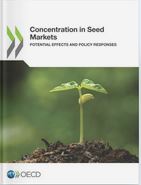 Topics Topics |
|
|
|
 Species Species |
|
|
|
|
|
China soybean purchase and drought are defining events in 2012 for Iowa’s soybean farmers
Ankeny, Iowa, USA
December 10, 2012
A $4 billion purchase of soybeans by China, severe drought conditions that continue across most of Iowa and the Midwest and a scientific breakthrough in soybean research were defining moments for Iowa’s soybean farmers in 2012.
“There were both planned and unexpected events that shaped the year that was for Iowa agriculture and Iowa’s soybean farmers,” says Mark Jackson, Iowa Association (ISA) president from Rose Hill. “Some had an immediate impact while others will have lasting affects well into 2013 and beyond.”
Events of significance in 2012 included:
- Chinese leaders, including then-Vice Premier Xi Jinping, arrive in Iowa in February and commit to purchase $4 billion of U.S. soybeans during signing ceremonies at the World Food Prize Center in Des Moines.
- Food purchasers representing Kraft, Kellogg’s and Sodexo are hosted by the ISA in May as part of a three-state “Soy Sustainability Farm Tour.” The group participates in on-farm tours where farmers showcase activities the strengthen soil and water quality.
- Lt. Gov. Kim Reynolds and Ag Secretary Bill Northey join ISA leaders and guests at a news conference hosted by Sukup Manufacturing Co. in Sheffield to announce more than $400,000 in contributions to “Special Delivery. Homes. Help. Hope. For Haiti.” The campaign, launched Dec. 2011 by Iowa Food & Family Project and co-chaired by Reynolds and Northey, totaled the equivalent of 64 Safe T Homes® and more than 230,000 servings of Meals from the Heartland for Haitians.
- ISA leaders travel to the European Union (EU) in July and meet with farmers, industry stakeholders and officials to better understand the impact of EU legislation and its impact on U.S. trade relations.
- Summer brings continued drought. Called worst in nearly 50 years, dry conditions plague large portions of Iowa and the nation’s soybean growing region. Weather worries temper soybean production estimates causing per-bushel soybean prices to climb to nearly $17.
- Soybean checkoff-funded research yields potential breakthroughs in fighting the soybean cyst nematode (SCN), a pest that costs U.S. soybean farmers billions of dollars annually in crop losses. Scientists identify the gene at the Rhg4 locus, a key player in the soybean plant’s resistance to SCN. Researchers are hopeful discovery will lead to understanding how the resistant genes work and ultimately to improved crop yields.
- Soybean farmers take to the field in September as drought continues to grip the state. Many are pleasantly surprised by strength of soybean yields. Better plant genetics and soil management cited as reason for better-than-expected crop performance.
- Iowa Environmental Protection Commission meets in October and maintains use of manure on acres that may grow soybeans at the precautionary rate of 100 pounds Nitrogen. The rate was maintained as illustrated and recommended by Iowa State University scientists and backed by the ISA and other farm groups.
- Nearly 100 World Food Prize (WFP) attendees participate in tours of two central Iowa grain farms. The events, sponsored by the ISA, were a new feature of this year's WFP providing visitors from around the world their first opportunity to see Iowa agriculture up close.
- Renewable Fuel Standard 2 (RFS) target for biodiesel volumes is increased in October by 28 percent for 2013 to 1.28 billion gallons. This responsible growth in the biodiesel market is supported by available production capacity and available feedstock to meet the ever-growing energy needs of our country.
- USDA’s November crop report bumps soybean production by 111 million bushels, largest-ever, one-month increase from October. Also includes a 100 million-bushel increase in demand, yet soybean prices recede as attention shifts to South America where favorable growing conditions indicate potential for strong global soybean supplies.
- Elected leaders and trade groups push for an emergency declaration in December to keep barges moving on the drought-riddled Mississippi River. Action comes after Army Corps of Engineers begins reducing the outflow into the Missouri River from the Gavins Point Dam in South Dakota from 37,500 cubic feet per second to 12,000. “This is an economic disaster in the making,” said Mike Toohey, president and CEO of Waterways Council Inc. Experts say the economic impact of terminating barge traffic would reach into the billions of dollars.
More news from: Iowa Soybean Association (ISA)
Website: http://www.iasoybeans.com Published: December 10, 2012 |
|
|
|
Better Food Venture's
AgTech Landscape 2019

|
| |
|
2019 THRIVE Top 50
landscape map

|
| |
|
Concentration in Seed Markets - Potential Effects and Policy Responses

(OECD December 2018)
|
|
Visualizing Consolidation
in the Global Seed Industry
1996–2018

Seed Industry Structure
1996-2018
Phil Howard
Associate Professor
Michigan State University
|
|
2017 Seed Company Family Tree
Ccreated Septebmer 2017
by Robert Walsh
WaSoo Farm, Elk Point, South Dakota |
 |
Syngenta Brands Family Tree
Ccreated January 2017 by Robert Walsh, WaSoo Farm, Elk Point, South Dakota
|
 |
| |
Rabobank's
World Vegetable Map 2018 |
 |
|
|